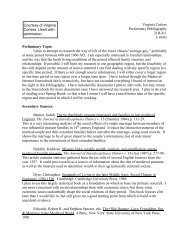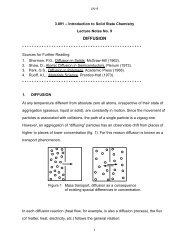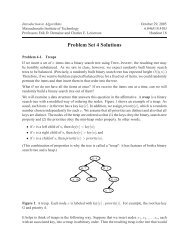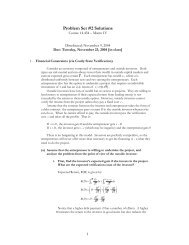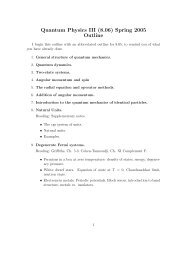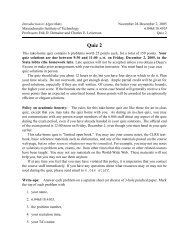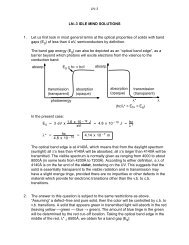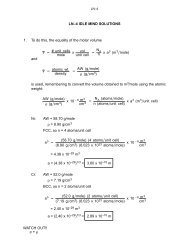3.091 â Introduction to Solid State Chemistry Lecture Notes No. 2 ...
3.091 â Introduction to Solid State Chemistry Lecture Notes No. 2 ...
3.091 â Introduction to Solid State Chemistry Lecture Notes No. 2 ...
- No tags were found...
You also want an ePaper? Increase the reach of your titles
YUMPU automatically turns print PDFs into web optimized ePapers that Google loves.
LN–2It is important <strong>to</strong> recognize that octet stabilization by electron orbital sharing results inbond properties which differ fundamentally from those encountered in ionic(electrovalent) bonding: with the formation of the covalent bond between the hydrogena<strong>to</strong>ms (H 2 molecule formation) the bond forming capabilities of the two hydrogen a<strong>to</strong>msare saturated; the final product is a distinct molecule (H 2 ) rather than a giant-sized solidbody which is obtained as the final product with ionic bond formation. Covalent solidbodies, however, also do exist: they are formed if the elements involved have thecapability of forming more than one bond. For example, carbon will form four covalentbonds in tetrahedral configuration - the result is diamond, a covalently bonded, threedimensional network.Dia<strong>to</strong>mic Molecules Involving Dissimilar A<strong>to</strong>msConsider the compound hydrogen chloride (in the gaseous, liquid or solid state). Thiscompound is not ionic (because the energy state on complete ionization would behigher. Instead, bonding between hydrogen and chlorine a<strong>to</strong>ms is accomplished by thesharing of electrons in a molecular orbital, thus forming a single covalent bond (fig. 6).p yasymmetriccharge distributionpolar covalency withasymmetric electron distributionsH- -pClpxHClsimplifiedpresentationδ + δ p zH ClFigure 617


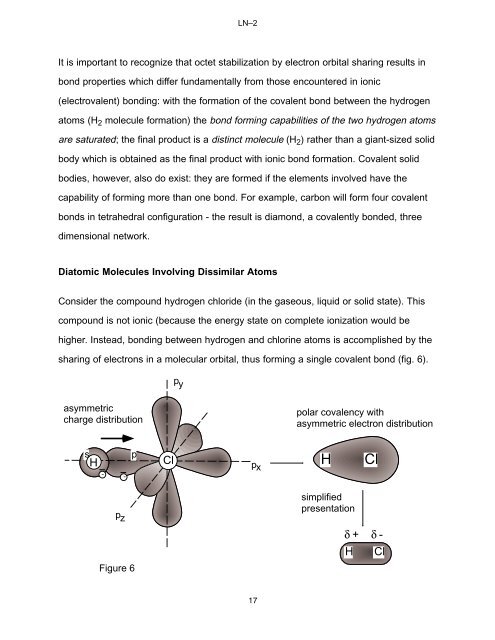
![18.03 Class 21, April 3 Fun with Fourier series [1] If f(t) is any decent ...](https://img.yumpu.com/51148985/1/190x245/1803-class-21-april-3-fun-with-fourier-series-1-if-ft-is-any-decent-.jpg?quality=85)

